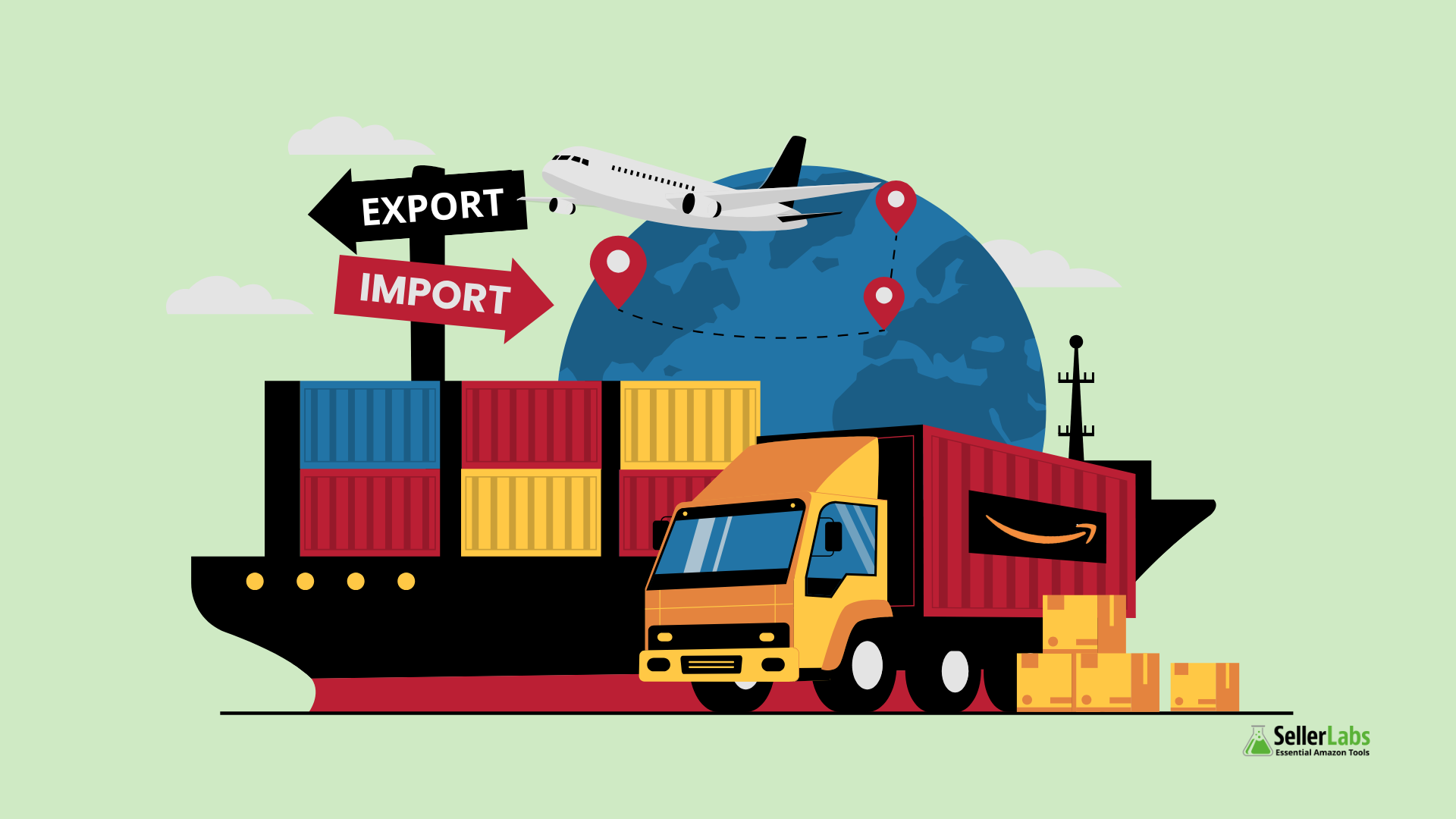New Tariffs in 2025: What Amazon Sellers Need to Know [Updated April 2025]
⚠️ April 2025 Update: Major Tariff Changes Announced
As of early April 2025, the U.S. has introduced sweeping new tariff policies that will impact many Amazon sellers—especially those importing from China, Hong Kong, or countries with large U.S. trade surpluses. These updates include:
- A new 10% baseline tariff on nearly all imports
- Reciprocal tariff increases targeting specific countries
- The elimination of duty-free exemptions for certain low-value shipments
So what exactly changed—and when do you need to start worrying about it? Here’s a quick table breaking it all down:
What Amazon Sellers Should Do Right Now
- Recalculate landed costs using current tariff rates.
- Review your supplier list, especially if sourcing heavily from China or Hong Kong.
- Run profitability scenarios using tools like Seller Labs SKU Economics
- Watch your restock strategy. Higher landed costs could change your reorder points and pricing models. The Seller Labs Restock App helps you forecast smarter by factoring in sales velocity, days of supply, and inventory targets.
- Stay informed. These policies are still evolving—bookmark this blog or subscribe for updates to stay ahead.
📌 We’ll continue to update this post as more tariff details emerge. Last updated: April 8, 2025.
The U.S. government has announced significant tariff increases on imports from key trading partners, including Canada, Mexico, and China. These changes, effective March 4, 2025, will impact various industries—including Amazon sellers who depend on international suppliers.
Understanding how these tariffs will affect product costs, supply chains, and pricing strategies is crucial for staying competitive. In this guide, we’ll break down the new tariffs and provide actionable strategies to help Amazon sellers navigate these changes.
What Are the New Tariffs?
The latest tariff changes impose additional taxes on a wide range of imported goods. Here’s a breakdown of the key updates:
According to The Times, these new tariffs mark one of the most significant shifts in U.S. trade policy, particularly affecting North American and Chinese imports. The increased tax burden is expected to have widespread consequences for e-commerce businesses, including Amazon sellers.
How Will These Tariffs Affect Amazon Sellers?
If you source products or raw materials from Canada, Mexico, or China, these tariffs could significantly impact your business in the following ways:
1. Higher Costs on Imported Goods
Amazon sellers who import inventory from affected countries will see a direct increase in costs. Many private-label sellers source products from Chinese manufacturers, meaning the 20% tariff will raise expenses and squeeze profit margins.
2. Changes to the De Minimis Rule
Previously, the de minimis rule allowed duty-free imports for shipments under $800. However, recent changes may lower this threshold, meaning more shipments will be subject to tariffs and customs duties. This could increase administrative work and raise costs for sellers relying on smaller imports.
3. Supply Chain Disruptions
With tariffs on materials like steel and aluminum, manufacturing costs are expected to rise, impacting the availability of key products. Additionally, AP News reports that Mexico, Canada, and China are considering retaliatory tariffs, which could further complicate supply chains for Amazon sellers. If suppliers raise prices or shift production locations, sellers may face delays and unexpected expenses.
4. Pricing Pressure & Competitive Shifts
If sellers increase prices to offset higher costs, they risk losing customers to competitors who source from tariff-free regions. On the flip side, some sellers may benefit if competitors struggle with cost increases.
How Amazon Sellers Can Prepare for These Changes
To stay profitable despite these new tariffs, consider these strategies:
1. Diversify Suppliers & Manufacturing Locations
Sourcing from alternative countries not affected by these tariffs (such as Vietnam, India, or Taiwan) could help reduce import costs. Look for suppliers who offer competitive pricing outside of China, Mexico, and Canada.
2. Optimize Inventory Management
With potential delays and increased costs, it’s critical to fine-tune inventory planning. Consider tools that help forecast demand and adjust stock levels accordingly to avoid unnecessary overstocking or stockouts.
Pro Tip:
The Seller Labs Restock Tool calculates the exact number of units needed based on sales trends and current inventory. Sellers can input their target days of stock to ensure they don’t over-purchase expensive inventory due to tariffs or run out of stock at a crucial time.
3. Review Pricing Strategies
While price increases may be necessary, avoid sudden, drastic changes. Test incremental price adjustments and monitor competitor pricing to stay competitive.
4. Monitor Trade Policy Updates
Tariff policies can change quickly. Staying informed will help you adapt to new regulations, potential tariff rollbacks, or government exemptions.
5. Check Harmonized Tariff Codes
Make sure you’re using the correct Harmonized Tariff Schedule (HTS) codes to classify your imports properly. Some products may qualify for lower tariffs under different classifications.
Pro Tip:
The Seller Labs Pro Dashboard consolidates key metrics, helping sellers track costs and financial performance. This ensures they can react quickly if a tariff increase makes certain products unprofitable.
The newly imposed tariffs are creating challenges for Amazon sellers who rely on imported goods. However, with strategic planning—such as supplier diversification, pricing adjustments, and inventory optimization—sellers can mitigate some of the impact.
Staying informed and adapting to changes will be crucial in 2025. If you haven’t already, now is the time to assess your supply chain, explore alternative sourcing options, and refine your pricing strategy to maintain profitability in this new trade environment. Seller Labs offers data-driven insights to help sellers make smarter decisions in response to these changes.
Want to stay ahead of the competition?
Try Seller Labs today and take control of your Amazon business!
